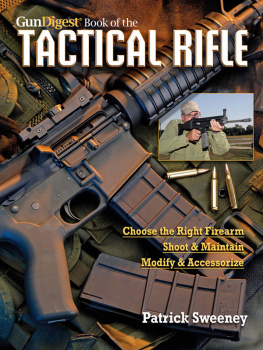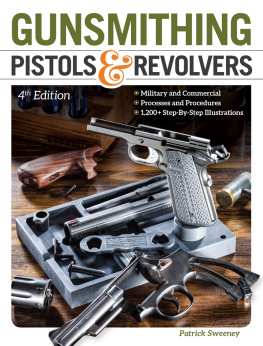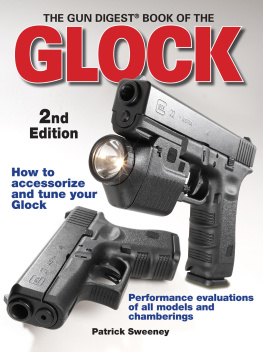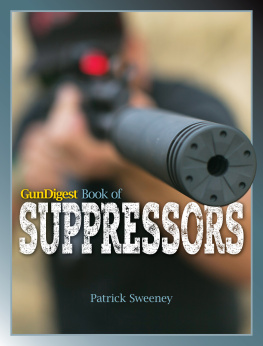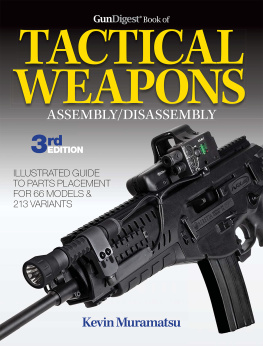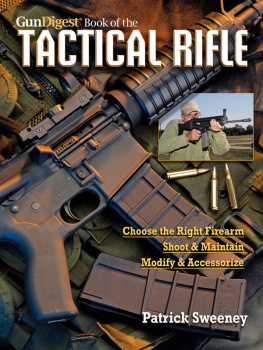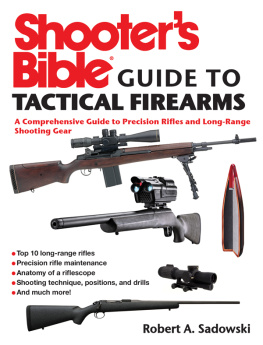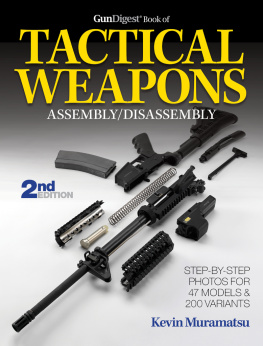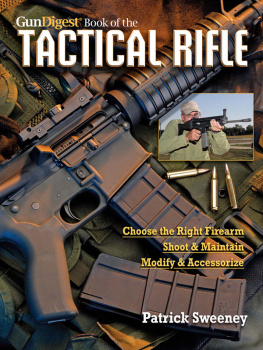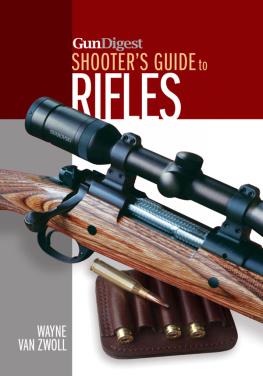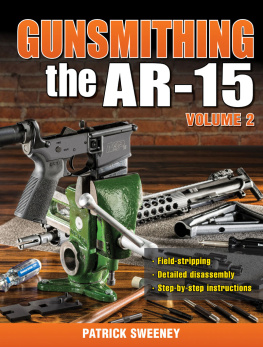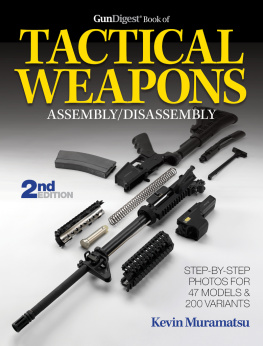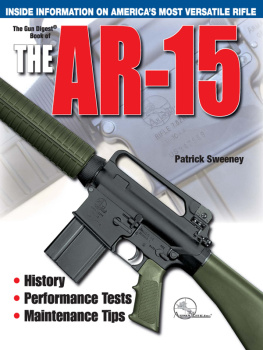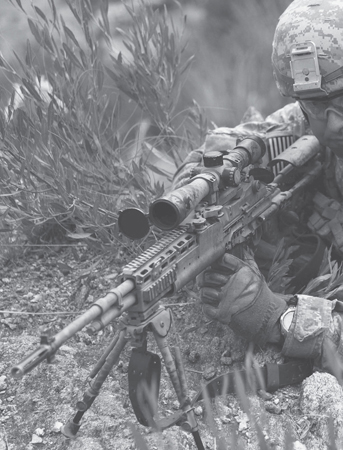As well, I'd like to give a nod to those who are not fans. Without feedback, authors (and radio broadcasters, movie stars and politicians) will veer off into areas they themselves enjoy, and leave their customers behind.
But through it all, the continuing credit goes to a deserving Felicia, who pointed out the path through the thickets, and patiently waited while I figured out how to hack through the metaphorical underbrush.
Have fun.
Acknowledgments
F irst up, I'd like to thank Steve Hornady, of Hornady ammo, for the cartons of ammo he's sent me for this and other projects. Also, Jeff Hoff man of Black Hills has been a supporter of mine and other gun writers' efforts, such that we as a group could probably not do what we do without the support of those two gentlemen.
FNH-USA provided much in the way of guns, gear, ammo and access. Not only did they host me at their 3-gun match (with CMMG) but they sent me an invitation to a private, writers-only afternoon of shooting with the array of their new firearms, including the 40mm grenade launcher. Elaine and David Golladay were quite clear when they sent me the invite: This is not for everyone you know. Clearly they know gun writers. There is usually a feeding frenzy when the ammo boxes are opened. To kick open cartons of practice 40mm grenades, in full view of gun writers, is to invite a riot.
Marc Christiansen of DS Arms was a very accommodating host, and not only saw that my excreble Indian FAL parts kit was ushered through the build process, but that whenever a problem came up, it was handled quickly and efficiently. As a result of that visit I gained a much greater understanding of the FAL than I had gotten in several decades of reading, and some shooting.
Marc Krebs is, well, a surpassingly gifted gunsmith, and an entertaining host. If you feel the AK is the rifle to have over all others, he should be on your short list to build you one or improve your current AK.
Century Arms has done what a lot of people said either couldn't be done, or felt was something far in the future, the all-USA made AK. Now that they've done it, I think we're going to see more USA-made AKs, and the world will be better for it. Plus, the folks at Century don't blanch when I send them photos of their firearms with dirt shoveled onto them, or dripping from the swamp-bath they've just received.
And, a tip of the hat to Kel-Tec, who do not just build excellent guns at an aff ordable price. They forge engineering and design progress that is often emulated by others. You may feel that their firearms are just a little too industrial looking for your tastes, but when it comes to performance in a particular package size, they are often the ones to look to first.
Finally, SIG. People tend to think of them as those guys who made all the 226s for the Navy SEALS. In Europe, they are the rifle company who also makes handguns. They have been kind and generous in sending me product, and looking the other way while I heinously abuse their precision-built rifles.
So, get out there, handle the products you've read about, and see what fits you. Then buy one, or two, and train with it. Learning to shoot well is entertaining, a good way to keep sharp, focused and fit, and it is your right, heritage and duty as an American citizen.
Patrick Sweeney
November 2010
Introduction
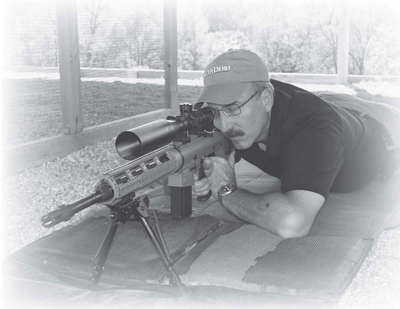
W hat is a tactical rifle? To many, it is something black, with rails and plastic and a big magazine. Something faintly sinister-looking. That might even be true in some cases, but it's a rather specialized example. A general description of a tactical rifle might be a rifle suitable for fighting, either in combat, or personal defense, with the mechanical certainty and ruggedness that such conditions require.
Tactical might be something in a big cartridge, or a small one. You might find that the FN 5.7 is perfect for your needs at the moment, while someone else would find that only the .408 Chey-Tac would do. Tac-tical is as tactical does. Or needs.
For a member of the 7th Cavalry, dismounted and facing an uncertain future at Little Big Horn that June day in 1876, a tactical rifle would have been a Henry or a Spencer. On a certain October day in 1918, the bolt-action rifle wielded by Alvin York was a tactical rifle. Tactical is as tactical requires.
But you aren't here to argue the existential basis of a tactical rifle, nor the peculiar requirements of any given moment in time. No, you want to know about rifles that hold lots of bullets, or those that send a single one to a precise spot, a long, long way away. You want to know about ARs, and AKs, and FALs, and AUGs, and, well, there's just something about the rifles we are interested in. Face it, when you read the three-letter names of each of those rifles in the previous sentence, a photo of each flashed in your memory.
Good! That means you're hooked. I will, however, shy away from AR lust here. I've covered them extensively in several other books (and more on the way) so this is the time for the non-ARs to rise. We'll look at rifles that are available, and not ARs, or at least mostly not ARs. The Stoner system is known mostly for being ubiquitous, and thus inescapable.
We'll also delve a bit into how to use these very specialized rifles and what to feed them, since a rifle without skills or ammo is a sorry tool with which to try to solve a pressing problem. And throughout, I hope we'll have fun and learn stuff.
Patrick Sweeney
October, 2010
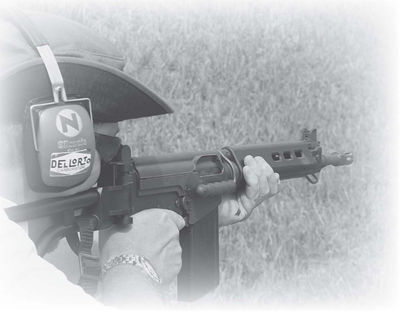
CHAPTER 1
Selection and Training

